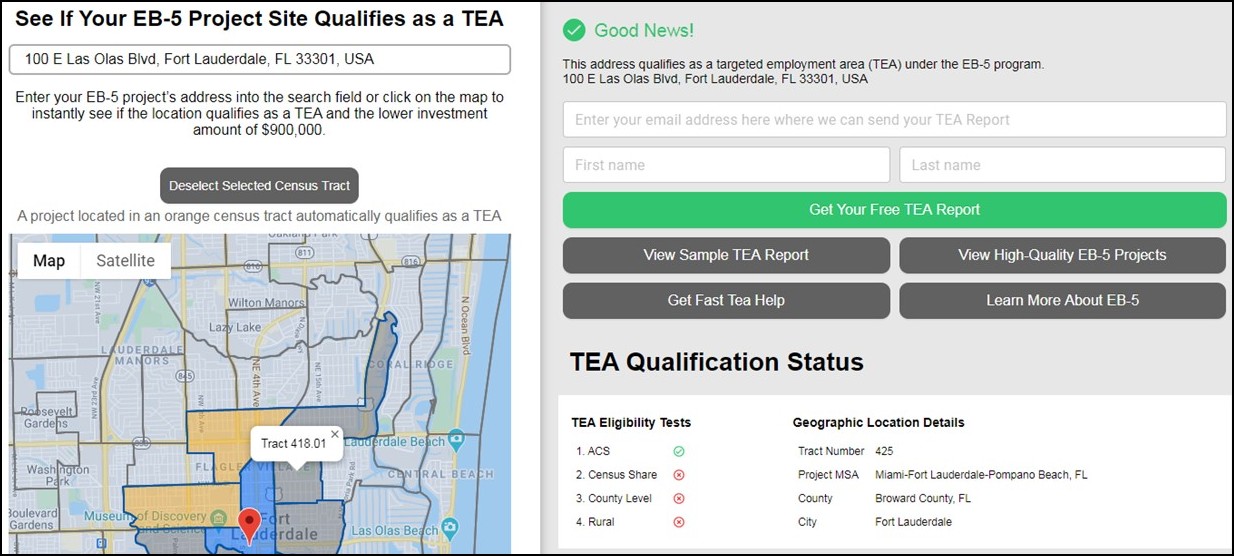Updated Free National EB-5 TEA Map Now Available with CY 2020 Employment Data
Following the release of Calendar Year 2020 (CY 2020) unemployment data from the Bureau of Labor Statistics, we have updated our targeted employment area (TEA) map to provide up-to-date unemployment data for census tracts across the United States.
Under the United States Citizenship and Immigration Service (USCIS) EB-5 Immigrant Investor Visa Program (the EB-5 program), a foreign investor can become eligible to obtain U.S. permanent resident status by investing either $1.8 million or $900,000 in a new commercial enterprise in the United States. To qualify for the lower investment amount of $900,000, an investor must invest capital funds in an area that qualifies as a TEA.
Evidence supporting the claim that a project location falls within a high unemployment TEA must accompany the investor’s I-526 Immigrant Petition by Alien Entrepreneur. To qualify, a geographic area (such as a county, metropolitan statistical area, city, or tract) must have an unemployment rate greater than 150% of the national average, as reported by the Bureau of Labor Statistics.
Our map identifies high unemployment areas that may qualify as TEAs.
View our free national TEA map—now updated with CY 2020 data—to see if your EB-5 project qualifies or remains qualified as a TEA. Areas of high unemployment (by census tract) are highlighted in orange on the map.
With a 2020 national unemployment rate of 3.9%, a high unemployment area is now a region with an unemployment rate of at least 5.85%.
Contiguous census tracts can be combined if the new commercial enterprise will operate in these tracts and if the tracts are adjacent to tracts in which the business will operate. If the unemployment rate of the combined region exceeds the high unemployment threshold, the area will be designated as a TEA.
Rural areas also qualify as TEAs. To qualify as a rural TEA, the area must be both outside of a metropolitan statistical area (MSA) and outside of a city or town with a population of 20,000 or more. Designating a rural area as a TEA does not require an official TEA designation letter, but applicants must submit third-party documentation with their I-526 petitions that demonstrates that the area qualifies as a rural TEA.
TEA certifications must use the most recent data available at the time of filing an I-526 petition. USCIS reviews TEA designations as part of each individual investor’s I-526 application. TEAs are also reviewed as part of the I-924 project exemplar process for EB-5 projects seeking preapproval from USCIS. Using the most recent unemployment data to determine whether an EB-5 project is located in a TEA will avoid a USCIS Request for Evidence and other delays caused by additional inquiries from USCIS.
TEA qualification for a specific project site can change from year to year, so it is important to research whether an EB-5 project site is still located in a TEA.











